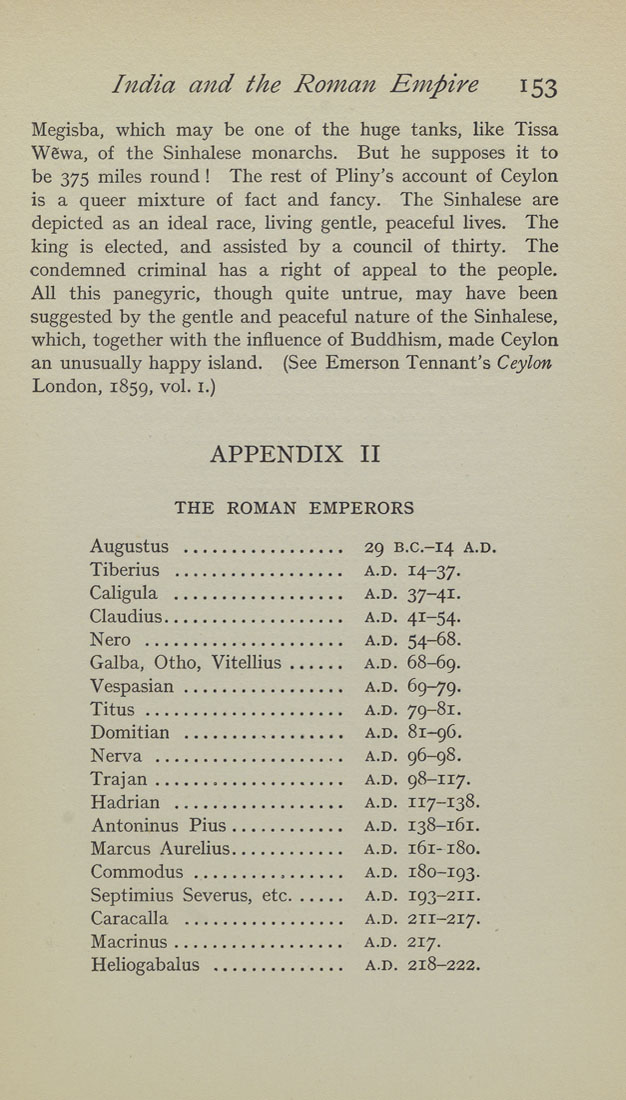India and the Roman Empire 153
Megisba, which may be one of the huge tanks, like Tissa
Wgwa, of the Sinhalese monarchs. But he supposes it to
be 375 miles round! The rest of Pliny's account of Ceylon
is a queer mixture of fact and fancy. The Sinhalese are
depicted as an ideal race, living gentle, peaceful lives. The
king is elected, and assisted by a council of thirty. The
condemned criminal has a right of appeal to the people.
All this panegyric, though quite untrue, may have been
suggested by the gentle and peaceful nature of the Sinhalese,
which, together with the influence of Buddhism, made Ceylon
an unusually happy island. (See Emerson Tennant's Ceylon
London, 1859, vol. i.)
APPENDIX II
THE ROMAN EMPERORS
Augustus ................. 29 B.C.-I4 A.D.
Tiberius .................. A.d. 14-37.
Caligula .................. A.D. 37-41.
Claudius................... a.d. 41-54.
Nero ..................... A.D. 54-68.
Galba, Otho, Vitellius...... a.d. 68-69.
Vespasian................. a.d. 69-79.
Titus..................... A.D. 79-81.
Domitian ................. a.d. 81-96.
Nerva .................... a.d. 96-98.
Trajan.................... a.d. 98-117.
Hadrian .................. a.d. 117-138.
Antoninus Pius............ a.d. 138-161.
Marcus Aurelius............ a.d. 161-180.
Commodus.........,...... a.d. 180-193.
Septimius Severus, etc...... a.d. 193-211.
Caracalla ................. a.d. 211-217.
Macrinus.................. a.d. 217.
Heliogabalus .............. a.d. 218-222.
|








